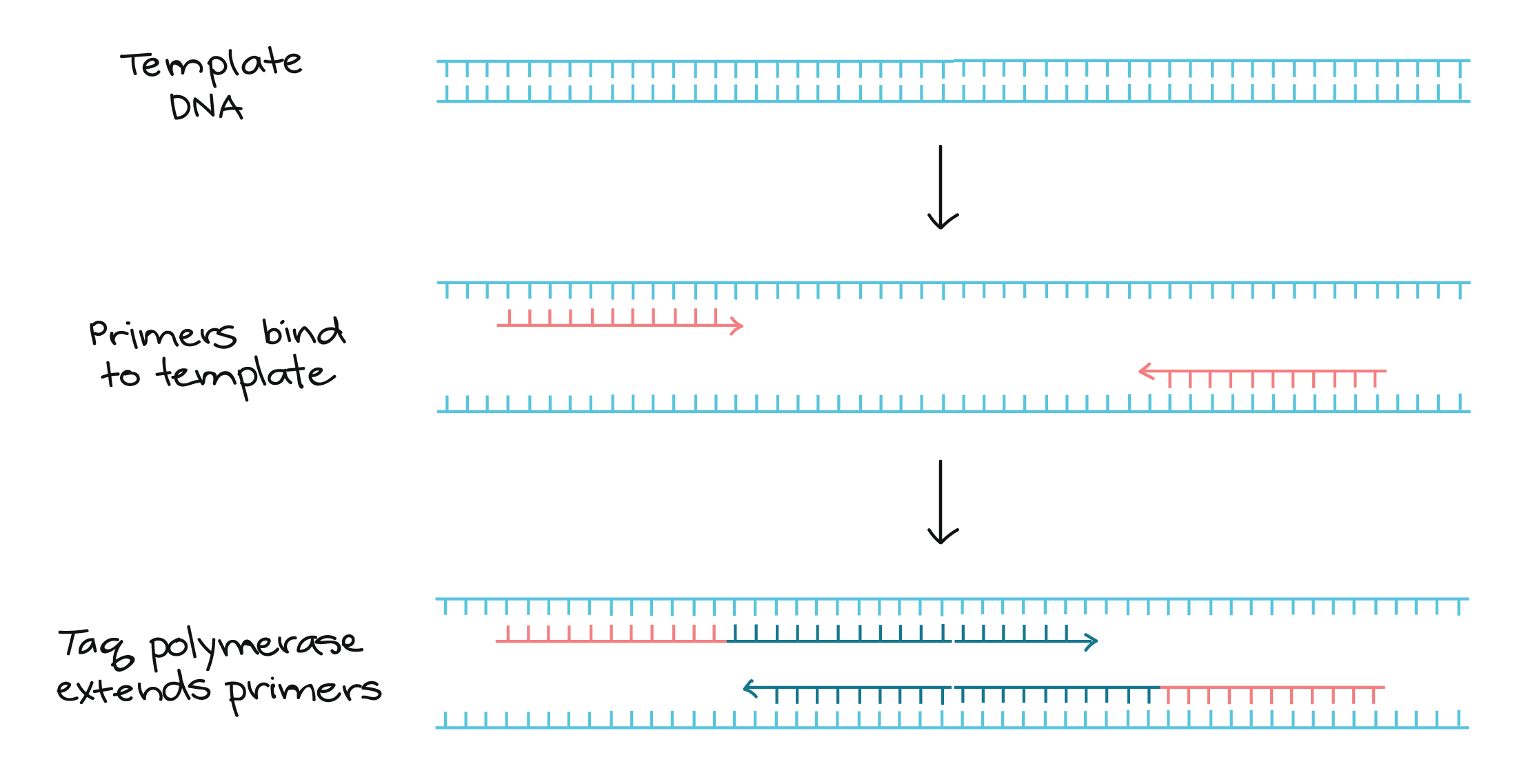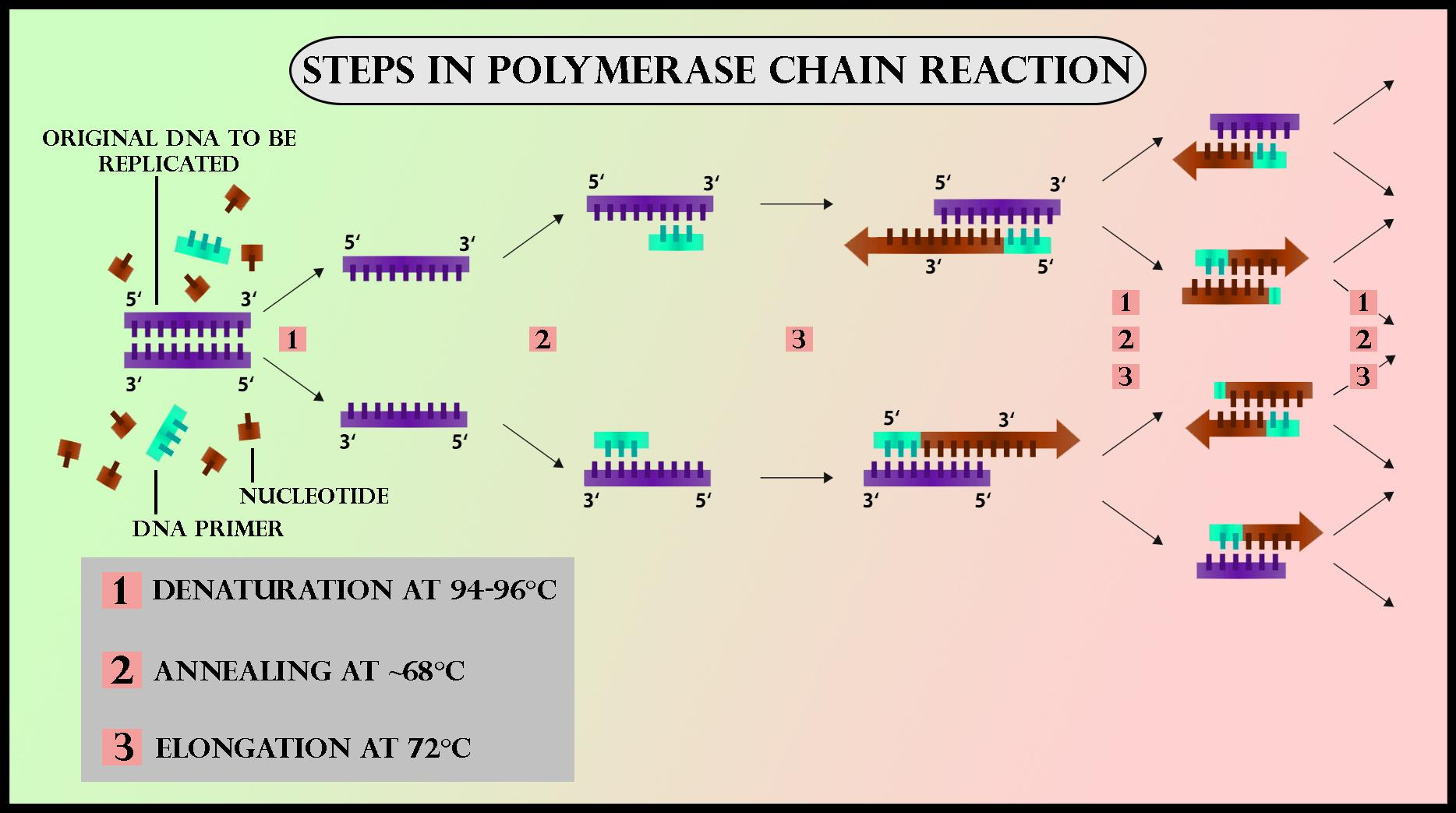Dna Template In Pcr
Dna Template In Pcr - The amplification is achieved by thermostable taq dna polymerase enzyme. Dna template that contains the dna region (target) to be amplified; 100ng is optimal and worked 90% for. Polymerase chain reaction (pcr) is a nucleic acid amplification technique used to amplify the dna or rna in vitro enzymatically. A basic pcr set up requires the following components and reagents: A pcr template for replication can be of any dna source, such as genomic dna (gdna), complementary dna (cdna), and plasmid dna. Two primers that are complementary to the 3′ (three prime) ends of each of the sense. Nevertheless, the composition or complexity of the dna contributes to optimal input amounts.
Polymerase chain reaction (pcr) is a nucleic acid amplification technique used to amplify the dna or rna in vitro enzymatically. Nevertheless, the composition or complexity of the dna contributes to optimal input amounts. A pcr template for replication can be of any dna source, such as genomic dna (gdna), complementary dna (cdna), and plasmid dna. The amplification is achieved by thermostable taq dna polymerase enzyme. A basic pcr set up requires the following components and reagents: Dna template that contains the dna region (target) to be amplified; 100ng is optimal and worked 90% for. Two primers that are complementary to the 3′ (three prime) ends of each of the sense.
Nevertheless, the composition or complexity of the dna contributes to optimal input amounts. A pcr template for replication can be of any dna source, such as genomic dna (gdna), complementary dna (cdna), and plasmid dna. Dna template that contains the dna region (target) to be amplified; Polymerase chain reaction (pcr) is a nucleic acid amplification technique used to amplify the dna or rna in vitro enzymatically. The amplification is achieved by thermostable taq dna polymerase enzyme. 100ng is optimal and worked 90% for. A basic pcr set up requires the following components and reagents: Two primers that are complementary to the 3′ (three prime) ends of each of the sense.
Setting up for Success How Do I Ensure I Have the Right Template for
Polymerase chain reaction (pcr) is a nucleic acid amplification technique used to amplify the dna or rna in vitro enzymatically. Nevertheless, the composition or complexity of the dna contributes to optimal input amounts. Two primers that are complementary to the 3′ (three prime) ends of each of the sense. Dna template that contains the dna region (target) to be amplified;.
What Is The Template Of The Pcr
The amplification is achieved by thermostable taq dna polymerase enzyme. A basic pcr set up requires the following components and reagents: Nevertheless, the composition or complexity of the dna contributes to optimal input amounts. Polymerase chain reaction (pcr) is a nucleic acid amplification technique used to amplify the dna or rna in vitro enzymatically. Two primers that are complementary to.
RealTime PCR (qPCR) AAT Bioquest
A pcr template for replication can be of any dna source, such as genomic dna (gdna), complementary dna (cdna), and plasmid dna. Polymerase chain reaction (pcr) is a nucleic acid amplification technique used to amplify the dna or rna in vitro enzymatically. 100ng is optimal and worked 90% for. The amplification is achieved by thermostable taq dna polymerase enzyme. Dna.
What Is The Template Of The Pcr
A basic pcr set up requires the following components and reagents: Polymerase chain reaction (pcr) is a nucleic acid amplification technique used to amplify the dna or rna in vitro enzymatically. Two primers that are complementary to the 3′ (three prime) ends of each of the sense. Nevertheless, the composition or complexity of the dna contributes to optimal input amounts..
PCR a DNA copy machine Lab Associates
Two primers that are complementary to the 3′ (three prime) ends of each of the sense. A pcr template for replication can be of any dna source, such as genomic dna (gdna), complementary dna (cdna), and plasmid dna. The amplification is achieved by thermostable taq dna polymerase enzyme. A basic pcr set up requires the following components and reagents: 100ng.
The Polymerase Chain Reaction
Nevertheless, the composition or complexity of the dna contributes to optimal input amounts. A pcr template for replication can be of any dna source, such as genomic dna (gdna), complementary dna (cdna), and plasmid dna. The amplification is achieved by thermostable taq dna polymerase enzyme. Two primers that are complementary to the 3′ (three prime) ends of each of the.
Dna Samples
Polymerase chain reaction (pcr) is a nucleic acid amplification technique used to amplify the dna or rna in vitro enzymatically. 100ng is optimal and worked 90% for. Nevertheless, the composition or complexity of the dna contributes to optimal input amounts. Dna template that contains the dna region (target) to be amplified; The amplification is achieved by thermostable taq dna polymerase.
What are the properties of PCR (template) DNA? Education
A pcr template for replication can be of any dna source, such as genomic dna (gdna), complementary dna (cdna), and plasmid dna. A basic pcr set up requires the following components and reagents: 100ng is optimal and worked 90% for. Polymerase chain reaction (pcr) is a nucleic acid amplification technique used to amplify the dna or rna in vitro enzymatically..
How Much Template Dna For Pcr
Dna template that contains the dna region (target) to be amplified; Two primers that are complementary to the 3′ (three prime) ends of each of the sense. 100ng is optimal and worked 90% for. Polymerase chain reaction (pcr) is a nucleic acid amplification technique used to amplify the dna or rna in vitro enzymatically. The amplification is achieved by thermostable.
How Much Template Dna For Pcr
Two primers that are complementary to the 3′ (three prime) ends of each of the sense. Nevertheless, the composition or complexity of the dna contributes to optimal input amounts. Polymerase chain reaction (pcr) is a nucleic acid amplification technique used to amplify the dna or rna in vitro enzymatically. A pcr template for replication can be of any dna source,.
100Ng Is Optimal And Worked 90% For.
Polymerase chain reaction (pcr) is a nucleic acid amplification technique used to amplify the dna or rna in vitro enzymatically. The amplification is achieved by thermostable taq dna polymerase enzyme. Two primers that are complementary to the 3′ (three prime) ends of each of the sense. A basic pcr set up requires the following components and reagents:
Nevertheless, The Composition Or Complexity Of The Dna Contributes To Optimal Input Amounts.
Dna template that contains the dna region (target) to be amplified; A pcr template for replication can be of any dna source, such as genomic dna (gdna), complementary dna (cdna), and plasmid dna.








